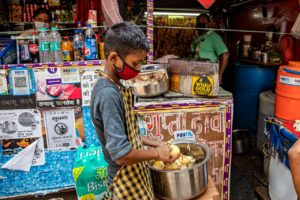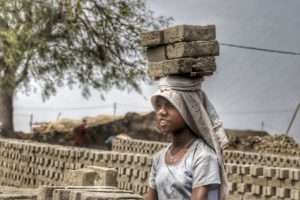World Day Against Child Labour: India’s uphill battle

Roadside eateries are amongst the principle culprits in child labour in India (MIG Photos/Aman Kanojiya)
Child labour is one of the several persisting social problems in India, despite decades of action to remove the evil practice. The coronavirus pandemic could have made the situation far worse.
It has been nearly 35 years since India abolished child labour, banning employment of children below 15 years of age who are out of education. However, despite several measures and actions by successive governments as well as several NGOs all over India, the country continues to employ over 10 million children. And this number is all set to shoot up, warn experts, citing the collapse of the economy that has pushed hundreds of millions of families deeper into poverty and deprivation.
Girish Kulkarni, founder of Snehalaya, an NGO that works with children of HIV+ sex workers in Ahmednagar district of western Maharashtra, should know a thing or two about the gravity of the situation regarding exploitation of children and use of child labour. His organisation, as old as the Child & Adolescent (Prohibition and Regulation) Act, has so far rescued thousands of children and provided them with education and vocational training.
Kulkarni has been furiously waving a red flag regarding the impact of the coronavirus pandemic on child labour as he expects a sharp spike in the number of children being illegally employed as impoverished families and bankrupt employers struggle to find ways to survive the worst economic situation in the country’s history.
“We have already noticed a significant increase in incidents of child labour in six subdivisions (tehsils) of southern Ahmednagar that are particularly drought prone. I believe that all over the state of Maharashtra, 300,000 more children would join the workforce in various sectors of the economy,’’ Kulkarni tells Media India Group, adding that this would rise further as a number of families have been forced to leave cities to go back to their villages since the lockdown began three months ago. “The reverse migration means that thousands of children who were attending schools in the cities or semi-urban areas will be out of schools as their parents take them back to their villages,’’ he adds.
According to the 2011 census, Maharashtra has about 700,000 children in employment, ranking fourth in the nation. Yet, the police registered only 313 cases against employers of children in the three year period from 2016 to 2018. It is perhaps small consolation for the state government that even this poor track record is better than the performance of many other states.
Quite aptly, the theme of the Child Labour Day, 2020 is ‘Covid-19: Protect children from child labour now, more than ever’. The need to protect the children in the current situation is greater than ever as coronavirus pandemic and lockdown is likely to push millions of poor to the brink and children will be among the worst sufferers.
Across the world there are an estimated 152 million underage workers and 72 million among them are engaged in hazardous work, according to a UN report. The report also says as much as 71 pc child labourers are in the farm sector, 17 pc in the service sector and 12 pc in the industrial sector, including in dangerous mining activities.
According to the data published by the National Crime Records Bureau (NCRB), in its Crime in India reports, from 2016 to 2018 the number of FIRs registered under Child Labour [Prohibition and Regulation] Act (CLPRA) increased by 127 pc. During these three years the number of victims rescued under CLPRA also increased by 111 pc, from 384 victims rescued in 2016 to 810 in 2018. In a country which counts for over 10 million such children, these numbers speak volumes about the distance that the country has to go to be able to seriously curb the evil.
“We all have forgotten the children in the rush of Covid -19 lockdown. There is no attention paid by either the government or the media. Child rights are crushed under the feet of reverse migrants. The present situation is a huge mess due to the lockdown. Vulnerability of the children has increased, health and livelihood securities are at stake,” Rani Patel, founder of Aarohan, a New Delhi based NGO that works with slum children, tells Media India Group.
Experts warn that in view of the pandemic and the subsequent lockdown, children not only face the horror of labour but also might be exposed to the brutality of early marriage and sex trafficking.
Some sectors of the economy have traditionally been prone to the use of child labour and it is likely that the pandemic would lead to a boom in the number of children employed by them. These are mainly MSME or micro, small and medium enterprises in various domains such as manufacturing and other industrial sectors in the unorganised segment of the economy. “The most common sectors that can likely employ children to keep their activities on track and at low cost might be the hotel industry, food supplies, street food vendors, roadside eateries as well as various service industries and construction. These sectors would mainly attract the boys while the girls will be engaged in house maid work and as home servants,” says Kulkarni.
“I don’t know about the employers but certainly migrant families would like to engage their children to earn/beg,” says Patel.
The NGOs and experts say that the government has done nothing so far to address this burning issue. They add that it needs to take immediate action to protect the children by providing temporary shelter homes to them with all basic facilities of vocational training and skills.
“Various departments of centre and state like labour, social justice and empowerment, social welfare, women and child development must work together to create a scheme. They also need to involve NGOs as media for effective implementation of these schemes for which immediate and priority based funding must be allocated. These facilities must be provided at least for next three years,” adds Kulkarni.










